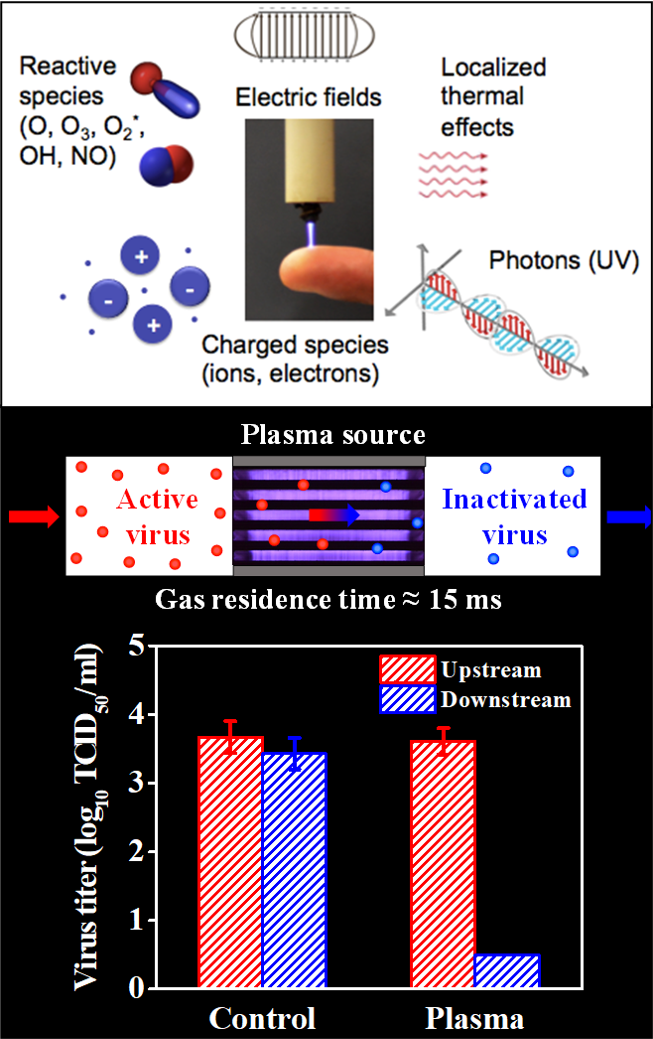
Interactions between atmospheric plasmas and biological systems
Plasmas have been used for decades in hospitals for tissue ablation and blood coagulation. In recent years, cold atmospheric pressure plasmas (CAPs) that do not inflict any thermal or electrical damage to living tissue have been engineered. This expands the medical applications of plasmas to a large amount of new promising applications, including wound healing, cancer treatment, and hand disinfection. These CAPs are typically small-scale plasmas and are produced by radiofrequency power or sub-microsecond puled high voltages.
The interaction of plasmas with living matter is poorly understood. Our main research topics include the fundamental investigation of plasma interaction with living matter, disinfection, and plasma-stimulated wound healing. We are also developing new related technologies.
In order to understand the biomedical part of the research, an extensive array of diagnostic techniques is applied to CAPs to obtain information about virtually all plasma constituents that can potentially directly or indirectly affect living tissue. This includes reactive species (OH, NO, O, etc.), UV radiation, electrical fields, ions, and electrons.
Our group collaborates with a multi-disciplinary team of researchers, including plasma scientists, veterinarians, microbiologists, and medical doctors to tackle these complex research challenges.
Further reading:
- K. Wende, P. Williams, J. Dalluge, W. van Gaens, H. Aboubakr, J. Bischop, Th. Von Woedtke, S.M. Goyal, K.D. Weltmann, A. Bogaerts, K. Masur, and P.J. Bruggeman. “Identification of the biologically active liquid chemistry induced by a non-thermal atmospheric pressure plasma jet,” Biointerphase, 6;10(2) (2015), 029518.
- G. Nayak, A.J. Andrews, I. Marabella, H.A. Aboubakr, S.M. Goyal, B.A. Olson, M. Torremorell, P.J. Bruggeman. ”Rapid inactivation of airborne porcine reproductive and respiratory syndrome virus using an atmospheric pressure air plasma,” Plasma Process. Polym., 17(10) (2020), e1900269.
